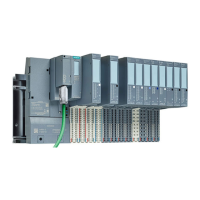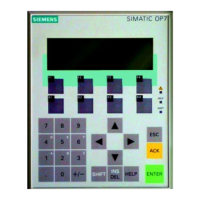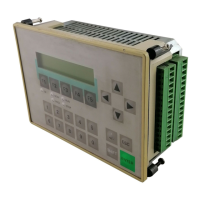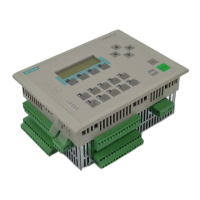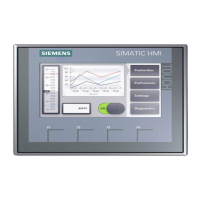Link-up and update
8.3 Time monitoring
CPU 410 Process Automation/CPU 410 SMART
128 System Manual, 05/2017, A5E31622160-AC
4. Based on the technical specifications of the PN devices used:
T
Device_UM
= 20 ms
5. Based on the technological settings of your system:
T
PTO_1
= 1250 ms
T
PTO_2
= 1200 ms
T
PTO_PN
= 1000 ms
6. Based on the user program:
T
WA
= 300 ms
T
PROG
= 50 ms
7. Based on the formula [1]:
T
P15
(DP master system_1)
= 1250 ms - (2 x 25 ms + 300 ms + 50 ms + 100 ms + 30 ms) = 720 ms
T
P15
(DP master system_2)
= 1200 ms - (2 x 30 ms + 300 ms + 50 ms + 80 ms + 50 ms) = 660 ms
8. Based on the formula [1]:
T
P15
(IO subsystem)
= 1200 ms - (2 x 8 ms + 300 ms + 50 ms + 110 ms + 20 ms) = 704 ms
Check: Since T
P15
> 0, continue with
1. T
P15_HW
= MIN (720 ms, 660 ms, 704 ms) = 660 ms
2. Based on the formula [2]:
T
P15_OD
= 50 ms + T
PH
= 50 ms + 90 ms = 140 ms
Check: Since T
P15_OD
= 140 ms < T
P15_HW
= 660 ms, continue with
1. Based on section Performance values for link-up and update (Page 130) with 170 KB of
user program data:
T
P15_AWP
= 194 ms
Check: Since T
P15_AWP
= 194 ms < T
P15_HW
= 660 ms, continue with
1. Based on formula [3], we obtain the recommended max. inhibit time for priority
classes > 15:
T
P15
= MAX (194 ms, 140 ms)
T
P15
= 194 ms
This means that by setting a maximum inhibit time of 194 ms for priority classes > 15 in
STEP 7, you ensure that any signal changes during the update are detected with a signal
duration of 1250 ms or 1200 ms.

